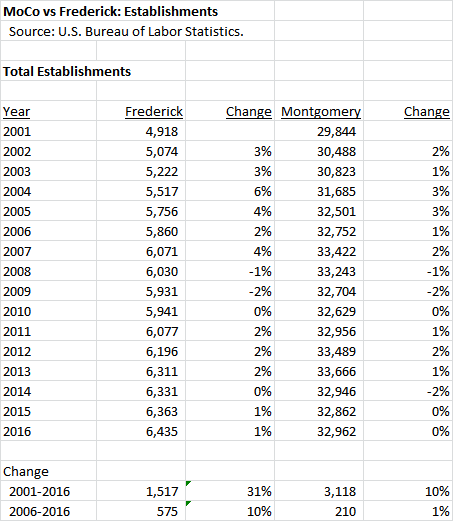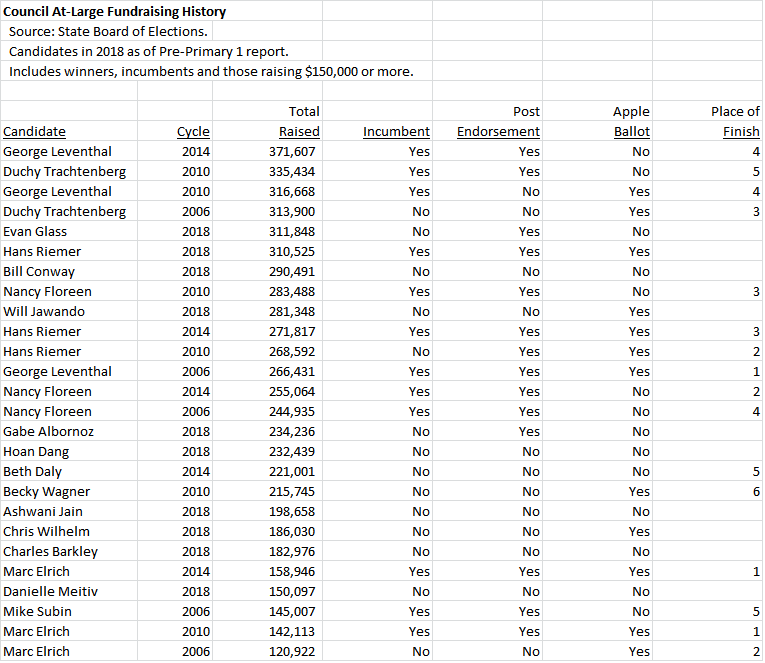The Washington Post sure has done a number on Marc Elrich.
In a second editorial endorsing David Blair for county executive, the Post quoted Elrich stating “I prefer to put jobs in Frederick” as proof that he “wants to focus employment elsewhere” – seemingly a damning charge against a candidate for Montgomery County executive.
Setting the Record Straight
The quote is taken from the Greater Greater Washington (GGW) blog post arguing that “Marc Elrich is not the right choice for Montgomery County Executive.”
Broadly, Elrich isn’t convinced Montgomery County needs to add many new homes or residents, or jobs. Many people with jobs in Bethesda or DC are now living in Frederick County and other outlying areas and driving through Montgomery to get to work. We asked Elrich what he’d do for these folks, and his answer was, “I prefer to put jobs in Frederick.” He’d encourage the growth of both households and jobs to happen there, and in Prince George’s County, and elsewhere.
I listened to the GGW interview with Elrich and the quote is taken out of context and utterly distorts the record. Marc makes clear that he wants economic growth, indeed that it is vital to the county’s future because our current budget trajectory is not sustainable into the future. If there is no money, he realizes that there will be no way to pay for efforts to do more to help people in poverty and others try to get a leg up.
So what did Marc Elrich mean when he said “I prefer to put jobs in Frederick”?
It was part of a much larger discussion of housing policy but the broader point was that it would be good to have jobs in many locales, including Frederick City, so the people up there don’t have to commute so far, which would also help alleviate traffic in Montgomery – an enormous concern – and help the environment.
He’d like to see more people have shorter commutes and more jobs near them around the region. That includes Montgomery, where many people suffer in traffic on the American Legion Bridge every day and probably would just assume not live their life stressing about whether traffic on the bridge is going to prevent them from picking the kids up. Moreover, the discussion was taking place in the context of the regional Council of Governments’ goal for housing and jobs around the region, which unsurprisingly includes plans for more of both in Frederick.
More broadly, Elrich doesn’t see economic activity as a zero-sum game where Frederick’s gain is necessarily Montgomery’s loss. Ironically, the Post has repeatedly lamented that DC, Maryland and Virginia didn’t come together on a bid for Amazon, an idea in the same vein, so I would have thought they’d appreciate this bow toward regional cooperation. The late Kevin Kamenetz didn’t bid for Amazon because he thought it belonged in Baltimore City and that Baltimore County would nevertheless benefit.
Both the Post and GGW have distorted the record. They clearly think Elrich is wrong for Montgomery County. But they shouldn’t twist his words out of all recognition to make their argument. It just undermines their case.
George Leventhal’s GGW Problem
Voters would find many of the ideas that GGW pushes hard in their interview far more shocking than Marc’s points. GGW’s version of “smart growth” doesn’t focus primarily on areas close to transit hubs and stations but promotes much higher density at almost any location with a bus line or they deem bikeable.
The heavily trafficked River Road Corridor is a prime example of where they’d like to see far more housing units built. They’d like to have seen far more density at Westbard, and to extend the Purple Line down the Capital Crescent Trail there. Previously, they’ve attacked the Kentlands as insufficiently dense, so their vision of “smart growth” is quite different from what many argue is good suburban development.
They also want Elrich to support allowing people to sell single-family homes to be torn down for high density buildings. Elrich sensibly pointed out that people who buy homes want some security in the neighborhood and that people who don’t want to move just end up next to a tall building with super high property taxes that they can’t pay. My guess is that GGW’s platform would not exactly get people to flock to their endorsed candidate, George Leventhal.
Most bizarrely, while smart growth advocates heavily pushed for more density around Metro and the Purple Line because there is no more room to build, GGW turns that on its head in its post inveighing against Elrich, claiming that he would open up far too little of the county to development. In my view, that’s not smart growth. It’s just development writ large.
Elrich’s Growth Agenda
Elrich’s promotion of a bus-rapid transit system for the county is probably the most pro-growth and pro-smart growth initiative launched in recent years, which makes GGW’s opposition all the stranger. My hope is that it would help start to break the Gordian knot of conflict between civic associations and developers by providing a real transit system for Montgomery that addresses transportation issues even as we grow.
GGW touts Leventhal as a proponent of “real” BRT because he wants it wholly in separate lanes, which would require more property takings, make it much more expensive, and therefore unlikely to happen. Marc argues sensibly for reversible BRT lanes, as there is no need for a separate lane going against rush hour traffic. That’s spending smart, something our government badly needs.
Just four years ago, I watched George Leventhal taking a passive aggressive negative approach towards Elrich’s BRT proposal without outright opposing it during a debate. He also lambasted now Council President Hans Riemer for the seemingly mild proposal to spend more on and improve Ride-On Bus service, an idea that David Blair now wants to put on steroids. I understand GGW applauds George for his staunch Purple Line support. But as on the minimum wage, he has been highly changeable on taking their transit vision into the future.
Conclusion
We have a lot of excellent candidates for county executive beyond David Blair and Marc Elrich, including former Rockville Mayor Rose Krasnow, Councilmember Roger Berliner and Del. Bill Frick. There are excellent cases for all of them and plenty of room to critique Elrich’s housing and other policies. I haven’t voted yet and am still looking closely at them. Let the debate continue but based on their actual records and positions.







